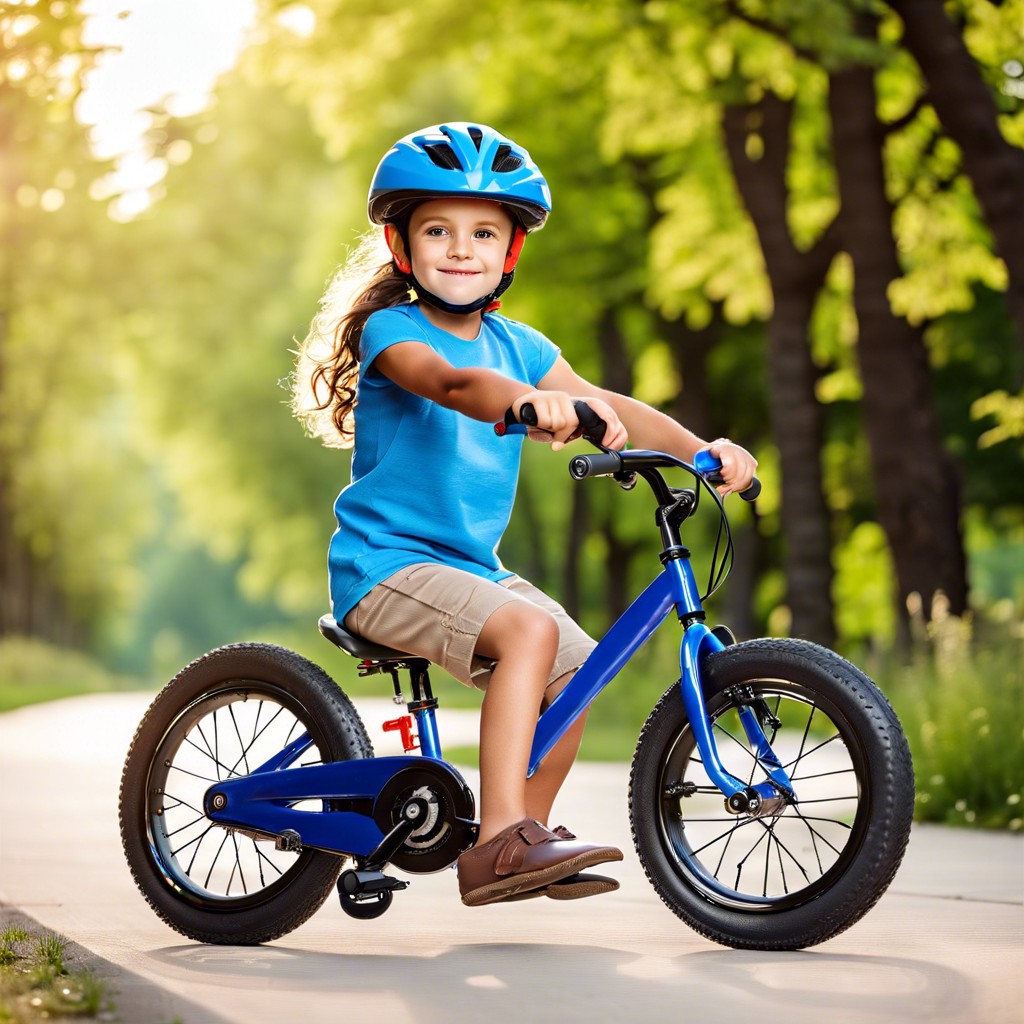Selecting the right bike size for a 6-year-old is crucial for both safety and comfort; this guide will provide you with the essential criteria to make an informed choice.
Key takeaways:
- Use a size chart to determine the right bike size
- Measure height and inseam for a more accurate fit
- Choose a bike with adjustable seat and handlebars
- Consider safety features like brakes, helmet, and chain guard
- Schedule a test ride to assess comfort and fit
Kids Bike Size Chart

When selecting a bike for a 6-year-old, a size chart can provide a useful benchmark to guide your choice. Typically, children in this age bracket will need a bike with 16 to 20-inch wheels. A child’s height generally correlates with wheel size: kids around 3’7″ to 4’0″ (110-120cm) would usually ride a 16-inch bike, while taller kids may move up to a 20-inch model.
These charts not only reference wheel size but also suggest appropriate frame size and bike type, ensuring a more tailored match to a child’s stature and riding ability. It is crucial to note that these are starting points; each child’s body proportions and individual growth patterns will influence the optimal bike size. Bike size charts, commonly found at bike shops and online, simplify the initial selection process, leading to subsequent fine-tuning for a perfect fit.
Measure Your Child’s Height and Inseam
Accurately measuring your child’s height and inseam is the first step to finding the perfect bike size. Stand your child against a wall, feet flat, without shoes, and use a pencil to mark the top of their head on the wall. Measure from the floor to the mark to determine height. For the inseam, have your child stand straight with their back against the wall and place a book between their legs, spine up, mimicking a bike seat. Measure from the top of the book to the floor. These measurements guide you towards a bike where your child can sit on the saddle with their feet flat on the ground, essential for stability and safety. It’s worth noting that children grow at different rates, so a 6-year-old’s size can vary; hence these measurements are more reliable than age alone.
Ensuring Proper Fit: Seat Height and Adjustability
When selecting a bike, the seat height should allow the child to touch the ground with their toes when sitting on the saddle. This facilitates safe mounts and dismounts. As skills develop, raising the seat supports a more efficient pedaling position.
Bicycles with adjustable seat posts and handlebars offer room for growth, extending the bike’s life span. Opt for models with a broad range of adjustability to encompass rapid growth phases.
Ensure that the child can easily reach the handlebars without hunching over or stretching. A natural, upright posture aids in balance and control.
Regularly check and adjust the fit of the bike as your child grows. This optimizes both comfort and control, maintaining the safety and enjoyment of the cycling experience.
Safety Considerations Beyond Size
While sizing is crucial, several other safety features need to be assessed when selecting a bike for a 6-year-old. Look for bikes with easy-to-operate brakes; hand brakes are appropriate for this age, but they must be reachable and manageable for small hands. Coaster brakes, which engage by pedaling backward, are another option and can be easier for beginners.
A correctly fitted helmet is non-negotiable. It should sit level on the head and not wobble; a proper fit ensures maximum protection. Reflective clothing and stickers improve visibility, an important consideration for young riders who may be less aware of their surroundings.
Additionally, ensure the bike has a chain guard. This not only protects little legs from grease but also reduces the risk of clothing getting caught in the chain. Lastly, consider the terrain where the bike will be used. Knobby tires are better for off-roading, while smoother tires are ideal for pavements. Each of these elements directly impacts the young cyclist’s safety and enjoyment.
Scheduling a Test Ride for Fit Assessment
A test ride is instrumental in gauging the appropriateness of the bike’s fit. During a scheduled test ride, observe the child’s footing; toes should touch the ground when seated. Assess comfort levels and confidence; they should be able to handle the bike with ease. Watch for reach to the handlebars; arms should not be overly stretched. Adjustments may be necessary; seat height and handlebar position can typically be altered for a better fit. Utilize professional assistance if available; staff at bike shops can offer valuable guidance during this process. Encourage feedback from the child; comfort and control are key indicators of a suitable match.